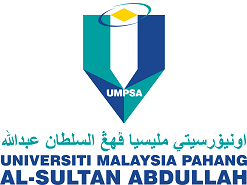KAPOK AS AN ADSORBENT FOR INDUSTRIAL WASTEWATER
DOI:
https://doi.org/10.15282/jceib.v5i2.3727Keywords:
kapok fiber, hydrophobic-oleophilic, adsorbent, wastewater, pre-treatment, sorption capacityAbstract
The study focuses on investigating kapok fiber as an adsorbent for oily industrial wastewater. Kapok fiber, KF (Ceiba Pentandra) is a natural plant fiber that poses excellent hydrophobic-oleophilic characteristics, due to the presence of penetrable hollow lumen structure and waxy material on its surface. The objectives of this study are to investigate the morphology of raw and treated kapok fiber (KF) before and after adsorption of wastewater as well as to study the sorption capacity of KF (including raw KF, ethanol-treated KF and chloroform-treated KF) in wastewater. Hence, the morphology of raw KF and KF treated with oil are analysed using scanning electron microscopy (SEM). Besides, the sorption condition of different types of wastewater including emulsified wastewater, immiscible oil-and-liquid wastewater and non-oily wastewater on raw KF are studied in this experiment. From the study, the raw KF shows the best sorption capacity of oil (29.00g/g) compared to the ethanol-treated KF (18.22g/g) and Chloroform-treated KF (16.58g/g) as the treated KF has larger amount of cellulosic content (hydroxyl group) present on the wall of kapok, making it less oleophilic. On the other hand, raw KF has the lowest sorption capacity of water (0.59g/g) followed by ethanol-treated KF (3.05g/g) and chloroform-treated KF (3.20g/g) on non-oily wastewater. Kapok fiber shows great potential as oil sorbent on any type of oil owing to its excellent hydrophobicity-oleophilicity characteristic. In conclusion, the raw KF shows the best sorption capacity of oil compared to the ethanol-treated KF and chloroform-treated KF because the effectiveness is resulted from the hydrophobic waxy coating on the kapok surface. Besides that, the lower sorption capacity of water than oil is due to the incomplete removal of wax from the wall of kapok, making it a little hydrophilic (likes water) as compared to oleophilic (likes oil).



